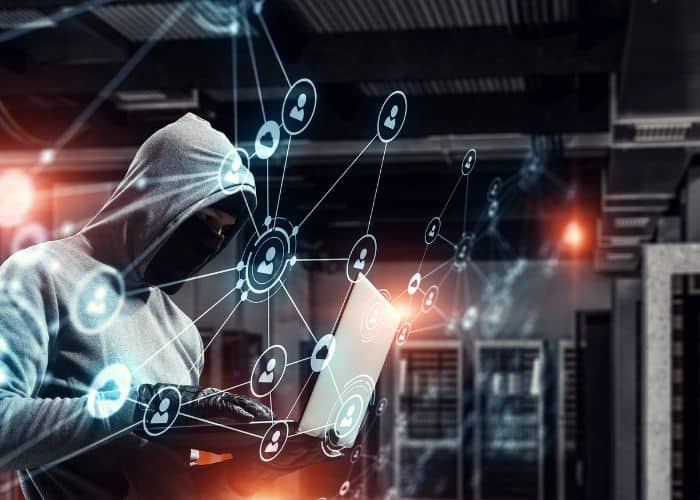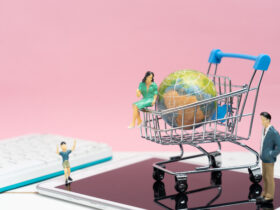In today’s interconnected world, cyber threats constantly loom over companies, regardless of size. Mid-market companies, sandwiched between large enterprises and small businesses, find themselves in a particularly tricky spot when it comes to cyber security.
They might not possess the expansive resources of big corporations to combat these threats. Yet, they have assets that could be more enticing to cybercriminals compared to smaller outfits. For them, enhancing cyber-security goes beyond just technical protocols. It’s about preserving the lifeline of their business operations.
With cyber-attacks becoming increasingly advanced and frequent, it’s paramount for these companies to stay one step ahead. This calls for adopting practical measures and strategies, which this article will discuss, to strengthen cyber security and protect their assets.
Employee Training and Awareness
In the digital landscape, our own people sometimes unknowingly open doors for cybercriminals. This is not due to ill intent but often a lack of knowledge. Making employees aware of the lurking dangers is essential.
When they understand the different forms of cyberattacks, like phishing, they can become the first line of defense. Providing consistent training through workshops or online courses is the key to fortifying this human firewall. However, it’s not just about recognizing threats. Employees should also know how to use security tools effectively.
Moreover, firms like Option3 actively invest in cybersecurity ventures. A quick look at their portfolio might help you pinpoint the ideal cybersecurity partners for your business. Option3 focuses on mid-market cybersecurity companies, so you won’t have to spend too much on this investment.
Two-Factor Authentication (2FA)
Two-Factor Authentication, often known as 2FA, is like adding an extra lock to your digital door. Imagine entering a room where a key alone isn’t enough; you’d also need a special code. In the digital world, while a password is your key, 2FA asks for something more. It could be a unique text message to your phone or a fingerprint scan.
This means even if someone sneaks a peek at your password, they’re stopped in their tracks, unable to access your data. Essentially, 2FA ensures that you have two forms of verification. It’s a simple yet powerful method, offering an added shield against potential cyber intruders.

The Significance of Regular Software Updates
Every piece of software, whether it’s your computer’s operating system or your favorite application, comes with its own set of imperfections. Over time, these imperfections or vulnerabilities become known to the broader world.
Cybercriminals actively hunt for these weak spots to gain unauthorized access or cause damage. It’s a cat-and-mouse game where software developers identify and swiftly address these vulnerabilities. The remedy they provide is through software updates.
Regularly updating software acts as a shield, preventing malicious actors from exploiting known vulnerabilities.
Managed IT Services
Managed IT services refer to the practice of entrusting your IT operations to an external organization. These specialized service providers oversee, streamline, and improve tech-related functions, ensuring a company’s digital machinery runs efficiently. One key aspect they bring to the table is their extensive knowledge of cybersecurity.
In the fast-paced digital landscape, threats keep evolving. Having an expert team like Charlotte IT Solutions dedicated to understanding these threats can be invaluable. They not only monitor for potential breaches but also implement measures to prevent them.
Establishing a Security Policy
Creating an effective cyber security policy is a step that no organization should overlook. This essential guide ensures everyone understands the company’s security stance. Ideally, it outlines acceptable and prohibited behavior regarding technology and data use.
It also defines the roles and responsibilities of individuals in safeguarding critical information. Moreover, a well-framed policy identifies the tools and systems in place to protect sensitive data. In case of any security incidents, it sets the protocol for responding, helping to minimize potential damages.
Routine security reviews and updates should also find mention in the policy. By providing clear instructions, a security policy acts as a safety net, preparing organizations for unforeseen digital challenges.

Regular Backups and Enhanced Cybersecurity
Regular backups play a pivotal role in today’s digital world, ensuring companies can bounce back from unforeseen events like data breaches. When cyber-attacks strike, the fallout can be immense. Lost data not only disrupts operations but can also erode customer trust.
A recent backup becomes the silver lining during such crises, providing a safety net against catastrophic data loss. By choosing to store this backup in a secure cloud or a protected external drive, businesses create a reliable recovery path.
Consistent backups mean that even if hackers manage a successful attack, the business can still access and restore its crucial data.
Securing Physical Access
Digital threats often grab the headlines, but ensuring safety from physical intrusions is just as crucial. Imagine someone accessing confidential data just because they could walk right into a server room! It’s essential that mid-market companies take measures to keep their hardware and data away from prying hands.
One effective strategy is to have monitored entry points, like coded keypads or swipe card systems, which only allow authorized personnel access to sensitive areas. Installing security cameras at strategic locations can also deter potential intruders.
Moreover, having security personnel present, especially after regular hours, offers an added layer of protection. And don’t forget, always maintain an updated log. It’s not just about who enters but also when and why. This way, you’ve got a clear trail in case of any discrepancies.
Incorporating Endpoint Security
When we talk about endpoint security, we’re referring to the protection of various access points connected to our networks. Think of your laptop or smartphone. These devices can unintentionally invite cyber threats if left unprotected. The real magic of endpoint security lies in specialized software.
This software diligently keeps an eye on all activities happening on your device. If it spots anything odd or potentially harmful, it jumps into action. It not only detects the threat but also works swiftly to block it, ensuring your data remains untouched. In today’s digital age, where threats lurk in many corners, having endpoint security is like having a personal guard for each of your devices.
Conclusion
In the evolving digital landscape, ensuring robust cybersecurity is paramount for mid-market companies. As these businesses are neither large enterprises with extensive resources nor small entities that are unattractive to hackers, they must be proactive against potential threats without breaking the bank. From training employees to adopting advanced security measures like endpoint protection, there are many steps, all equally essential to prevent cyber attacks.
In the end, safeguarding a company’s digital assets isn’t just about technology; it’s about fostering a culture of vigilance, awareness, and continuous improvement. As cyber threats grow in sophistication, businesses must rise to the challenge, fortifying their defenses for a secure future.













Leave a Reply